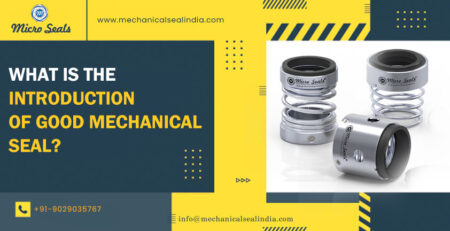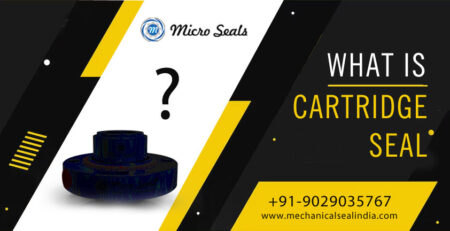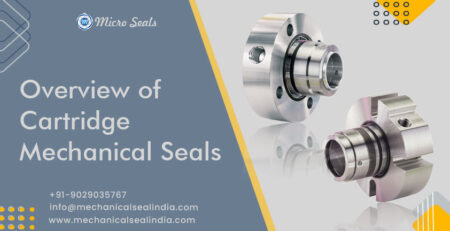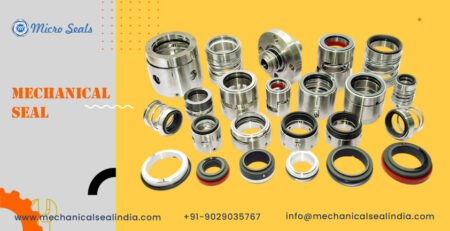What is the type of mechanical seal?
Mechanical seals play a crucial role in preventing leaks and maintaining the efficiency of various industrial equipment. These devices come in different types, each designed to meet specific operational requirements.
This comprehensive guide explores the main categories of mechanical seals and their applications. It covers basic types, balanced and unbalanced seals, as well as pusher and non-pusher designs.
By the end of this article, readers will have a clear understanding of the different types of mechanical seals available and their uses in various industrial settings.
Basic Types of Mechanical Seals
Mechanical seals come in various types, each designed for specific applications. The main categories include multi-spring, wave spring, conical spring, and bellows seals.
Multi-spring seals feature multiple springs that distribute force evenly across the seal faces, making them suitable for larger shafts.
Wave spring seals work well with slightly dirty fluids and are common in wastewater applications.
Conical spring seals are simple and economical, but their effectiveness depends on the shaft’s rotation direction.
Bellows seals, available in rubber, metal, and PTFE varieties, offer unique advantages for different operating conditions.
Metal bellows seals, for instance, are highly efficient and designed for demanding applications, capable of withstanding high pressures and temperature fluctuations.
Understanding these mechanical seal types is crucial for selecting the appropriate seal for specific pump systems and process variables.
Balanced vs. Unbalanced Mechanical Seals
Mechanical seal types can be classified as balanced or unbalanced, each with distinct characteristics.
The balance ratio determines the seal’s performance and suitability for different applications.
Unbalanced seals typically have a balance ratio greater than 1, resulting in higher face pressure compared to the sealed pressure. This design makes them more stable when subjected to vibration and misalignment, but limits their use to low-pressure applications, typically up to 10 barg.
Balanced seals, on the other hand, have a balance ratio less than 1, usually between 0.65 and 0.85. This design reduces the net closing force, allowing for better lubrication and operation at higher pressures.
Balanced seals generate less heat across the face and are better suited for handling liquids with poor lubricity and high vapor pressures, such as light hydrocarbons.
While unbalanced seals are more stable, balanced seals offer extended life and reduced energy consumption, making them the preferred choice in many industrial applications.
Pusher and Non-Pusher Mechanical Seals
Mechanical seals are typically categorized into two major types: pusher and non-pusher. Pusher seals utilize one or multiple springs to maintain seal closing forces.
These seals consist of a primary sealing ring assembled with an ‘O’ ring and springs, which force the sealing fluid across the face and prevent leakage to the atmospheric side.
The dynamic ‘O’ ring moves axially along the shaft or sleeve, requiring a smooth surface for proper movement. Pusher seals are commonly used in low specific gravity (<0.7) services and light end applications such as ethylene, propane, and butane.
Non-pusher seals, on the other hand, use a bellows assembly that acts as both the load element and secondary sealing element. The bellows prevents leakage to the atmospheric side and has a large clearance between itself and the shaft, reducing the potential for hang-up.
Non-pusher seals are well-suited for dirty and high-temperature applications, with metal bellows seals capable of withstanding temperatures up to 425 degrees Celsius. Both pusher and non-pusher designs are available in balanced and unbalanced configurations, offering versatility for various industrial applications
Conclusion
Mechanical seals are essential components in various industrial applications, playing a key role in preventing leaks and maintaining equipment efficiency. This article has shed light on the main types of mechanical seals, including multi-spring, wave spring, conical spring, and bellows seals, as well as the distinctions between balanced and unbalanced designs. It has also explored the differences between pusher and non-pusher seals, highlighting their unique features and applications.
Understanding these type has its own strengths and limitations, making them suitable for different pressure ranges, temperatures, and fluid properties. By considering factors such as balance ratio, seal face materials, and secondary sealing elements. This knowledge is vital to ensure the smooth operation of pumps, compressors, and other rotating machinery across various industries.











